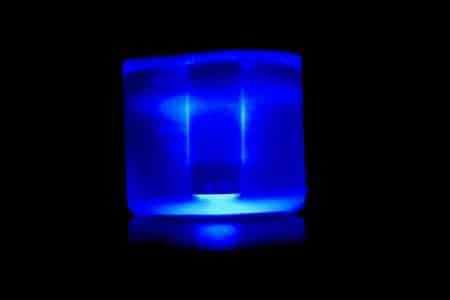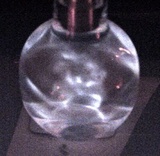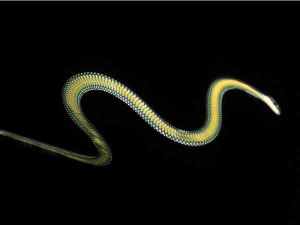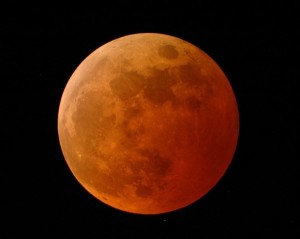Did you know that under certain circumstances sound waves can generate visible light? I guess, you didn’t, just like me. This phenomenon is called sonoluminescence.
The first instances of sonoluminescence were documented in the mid-1930s. During this period, scientists, experimenting with naval sonar, noticed that sound waves, when traveling through water, could sometimes create a bluish glow. Small bubbles would emit flashes of light in ways that could only be termed ‘aces’. As the phenomenon was discovered by accident when researching the causes of “degradation of ship propellers,” it didn’t rose to the top of the research agenda.
It wasn’t until the late-1980s, when scientists managed to repeatedly create single-bubble sonoluminescence, single bubbles that would glow with bluish bursts of light.
But what causes this phenomenon? It is an issue of debate. However, there are a few things about sonoluminescence that everyone agrees on. It happens when small bubbles are created and the sound waves applied to water cause those bubbles to expand and contract rapidly. That rapid expansion and contraction, in such a small space, causes a massive concentration of the energy of the sound waves, and leads to flashes of light. Most papers about sonoluminescence take note that a ‘concentration of energy’ is hardly a new concept. For example, a concentration of energy occurs every time a person gets a static shock from a doorknob. The large difference in electrostatic charge between the person and the doorknob gets concentrated on the tip of one finger and creates a shock. Other concentrations of energy can be even simpler. For example, the blade of a knife, as it cuts into something.
One of the most commonly held theories about the causes of occurrence of sonoluminescence is the idea that when a bubble collapses, the air inside gets pressurized. Increasing the pressure on a gas increases the temperature of the gas. In cases where the temperature inside the tiny bubbles becomes pretty high the gas begins to glow.
Another theory on sonoluminescence is that the collapsing bubble leads energy to prolong the life of the otherwise quickly annihilating photons that are spontaneously generated in a vacuum. Sonoluminescence could also be the product of the way photons can pop into and out of existence; the sudden collapse of the bubble making the photons noticeable to those in the macro world.
Thanks to: Wikipedia
[ttjad keyword=”best-selling-gadget”]






Pingback: Tweets that mention Sonoluminescence: Light is Created by Sound Wave | TheTechJournal.com -- Topsy.com
Pingback: is it possible to see the world like daredevil? | SEM
Well that is crazy frigg’n fascinating.